On the 25th of July 1554, Queen Mary I of England married Philip II of Spain at Winchester Cathedral. Catherine of Aragon’s dream came true: at the age of 37, Mary Tudor became the first queen regnant in England and turned her attention to finding a husband. The match was suggested by the Holy Roman Emperor Charles V, who wanted to create an Anglo-Spanish alliance against France and restore England to the flock of Rome. To elevate his son to Mary’s rank, Charles ceded the crown of Naples, as well as his claim to the Kingdom of Jerusalem, to Philip.
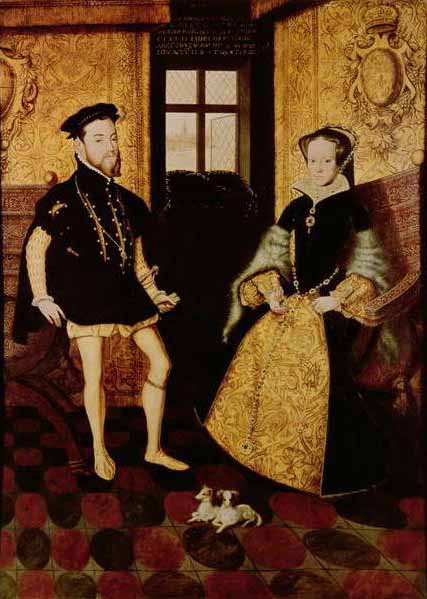
During the marriage negotiations, a portrait of Philip of Spain by Titian was sent to Mary in September 1553. She was captivated by the image of young and handsome Philip in armor, dreaming to wed him despite the fact that he was 26, being 11 years Mary’s junior, and had a son from a previous marriage. Mary called her matrimonial arrangement a “greater match than she deserved.” She wanted to divide her responsibilities between those of a wife and those of a queen. Therefore, at first Mary considered her union with Philip of Spain as one of political nature.
In one of her letters, she wrote that:
“If Philip will be inclined to be loving, this is not my desire, therefore I am in the age that His Highness already knows, and never had I fed love thought. But if he to desire to interfere in the government of my country, could not allow such thing”.

However, not everyone wanted Mary to become the wife of a Spanish Prince. The House of Commons asked the queen not to marry a foreigner, but she insisted that she had already made her final decision. In spite of her fears that she could have difficulties with English Parliament, both Houses ratified the marriage treaty within several days of Parliament’s opening. Finally, Mary’s wedding to Philip took place with great pomp and splendor befitting her queenly station.
In her “Mary Tudor: Princess, Bastard, Queen”, Anna Whitelock writes about the wedding:
“The ceremony was one of unparalleled pomp and extravagance. Winchester Cathedral was decorated resplendently with banners, standards, streamers, and tapestries, all emblazoned with Spanish regalia. A raised wooden platform, covered with carpets, reached from the main door of the church to the choir, at its center a dais in the shape of an octagon, the setting of the solemnization of the marriage. The arrangements for the wedding were based on those of Mary’s mother’s marriage to Prince Arthur. The ceremony was to be traditional and performed in Latin by Bishop Gardiner, assisted by other bishops, all attired in copes and miters.”
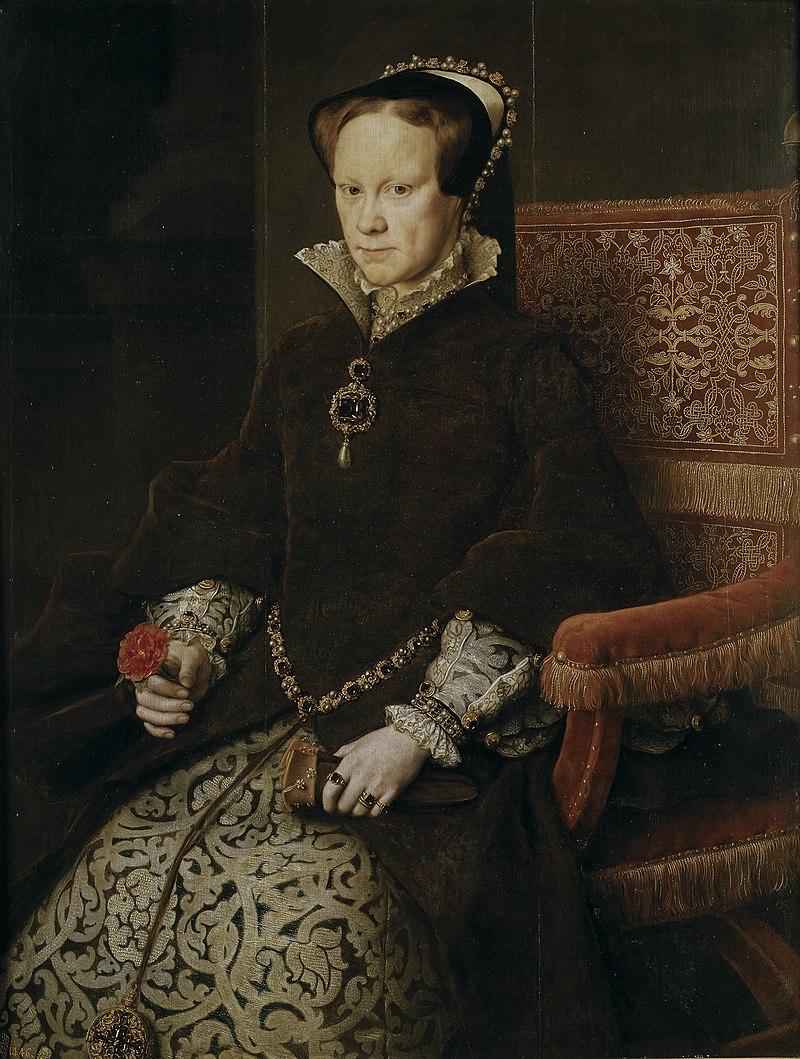
Mary was pleased and looked devoted to Philip, intending to be a good and dutiful wife to him. Some people think that Philip was a bad husband, but it is not entirely true because he was generous and attentive to her, although he never loved her. Philip also kept his word and didn’t interfere into most of the English state affairs, thoroughly interested in politics in Spain, Italy, and America. However, based on some comments of the Spanish party, we can conclude that Philip did not find his new spouse appealing and interesting, and to him, their age gap mattered a lot.
Ruy Gómez da Silva, 1st Prince of Éboli, a Portuguese nobleman and one of Philip’s main advisers, said tactfully:
“The Queen is a lady of quality, but older than we thought, but His Highness is behaving so well and gives so many gifts that I’m sure both will be very pleased with each other, the king is trying to be as friendly as possible, he believes that his marriage was not made for flesh, but for the restoration of this area and preservation of those states (Flanders).”
Another Spanish courtier, a member of Philip’s entourage, wrote to his friend:
“Their Majesties are the happiest couple in the world, and more in love than words can say. His Highness never leaves her, and when they are on the road he is ever by her side, helping her to mount and dismount. They sometimes dine together in public, and go to Mass together on holidays. The Queen, however, is not at all beautiful: small, and rather flabby than fat, she is of white complexion and fair, and has no eyebrows. She is a perfect saint and dresses badly. All the women here wear petticoats of colored cloth without admixture of silk, and above come colored robes of damask, satin or velvet, very badly cut.”
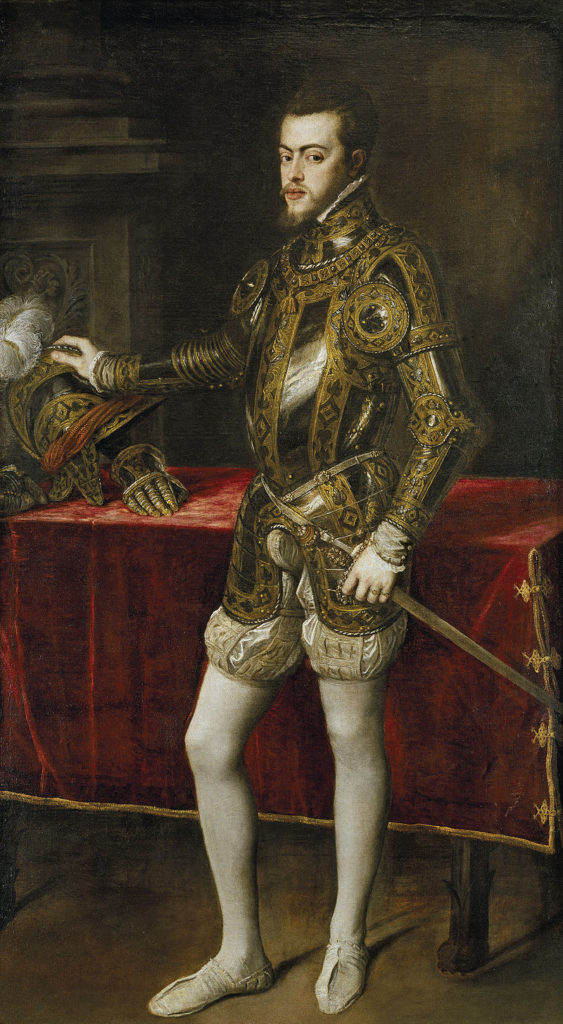
The tension was growing, for many courtiers and even servants hated the Spaniards. Some Spanish noblemen were robbed in the streets of London and on the roads where the royal cortege stopped on the progress. Soon a number of Spanish lords and gentlemen obtained permission to depart from England. The commoners did not welcome the royal marriage either, perhaps afraid that their queen would allow her foreign husband to make England a province of Spain.
When Mary just ascended to the throne, she issued a royal proclamation that she would not compel anyone to repudiate Protestantism. Nevertheless, being a staunch Catholic and not wishing to have heretics in her realm, soon she ordered arrests of leading Protestant churchmen, including John Bradford, Hugh Latimer, and Thomas Cranmer, who had declared Catherine of Aragon’s marriage to King Henry VIII null and void years ago. Despite her initially honorable declarations, it is obvious that Mary resolved to settle old scores with at least Cranmer, who would eventually meet a horrible death at the pyre. Philip’s role in the restoration of Catholicism in the country cannot be diminished. Mary and Philip together presided over a joint session of Parliament, in which reconciliation with Rome after 20 years of division was achieved. By the end of 1554, the Heresy Acts were revived, and numerous Protestants were apprehended and then executed.
One of the main purposes of this marriage for Mary was to give birth to a Catholic heir to the English crown. At first, it seemed that she had successfully conceived, and the pregnancy was confirmed by her physicians. Letters were sent to bishops ordering special prayers for this “good hope of certain succession”. The news was proclaimed across Europe, and Mary was very happy.
Just before Christmas 1555, Queen Mary wrote to Charles V, her father-in-law:
“As for that child which I carry in my belly, I declare it to be alive and with great humility thank God for His great goodness shown to me, praying Him so to guide the fruit of my womb that it may contribute to His glory and honor, and give happiness to the King, my Lord and your son, to Your Majesty, who were my second father in the lifetime of my own father, and are therefore doubly my father, and lastly that it may prove a blessing to the realm.”
Soon Mary went into confinement and made provisions for the birth of the child. On the 30th of April 1555, bells rang out, as if Mary had delivered a prince, but the people’s hopes were empty – the rumors that were spreading through England were not true. The queen did not go into labor, and calculations for the new date of delivery were made. As more weeks passed, it became clear that Mary was not pregnant. Philip was restless, simultaneously being increasingly involved with the war against France. For Mary, embarrassment and humiliation were immeasurable.
Ruy Gómez da Silva wrote:
“All this makes me wonder whether she is with child at all, greatly as I desire the thing to be happily over.”

In a few weeks, Philip departed from England to the Low Countries. In his absence, Mary and Reginald Pole, who was appointed Archbishop of Canterbury after his return from Rome, continued persecutions of Protestants, many of whom were burned at the stake. This nevertheless proved to be an ineffective measure to eradicate what Catholics called heresy. Philip returned to England for a short time, and Mary’s reunion with her spouse was called by one of the diplomats “a warmed over honeymoon”. But Philip’s reasons were purely political: he needed money for his military projects and wanted England to declare war on France. Soon Philip left the country, and Mary would never see her husband again. England was then drawn into the military conflict with France, but the result of this was costly and awful – the country lost the city of Calais.
Soon Mary became convinced that she carried Philip’s child, but her pregnancy was false again. Her heath was deteriorating: she suffered from intermittent fevers, insomnia, headaches, and loss of vision. At the same time in Flanders, Philip learned of the death of his father and went to Brussels. Then he was notified about the demise of his own wife.
Philip II of Spain wrote to his sister in Spain about Mary’s untimely death:
“You may imagine what a state I am in. It seems to me that everything is being taken from me at once.” With regards to Mary’s death, he added: “May God have received her in His glory! I felt a reasonable regret for her death. I shall miss her, even on this account.”
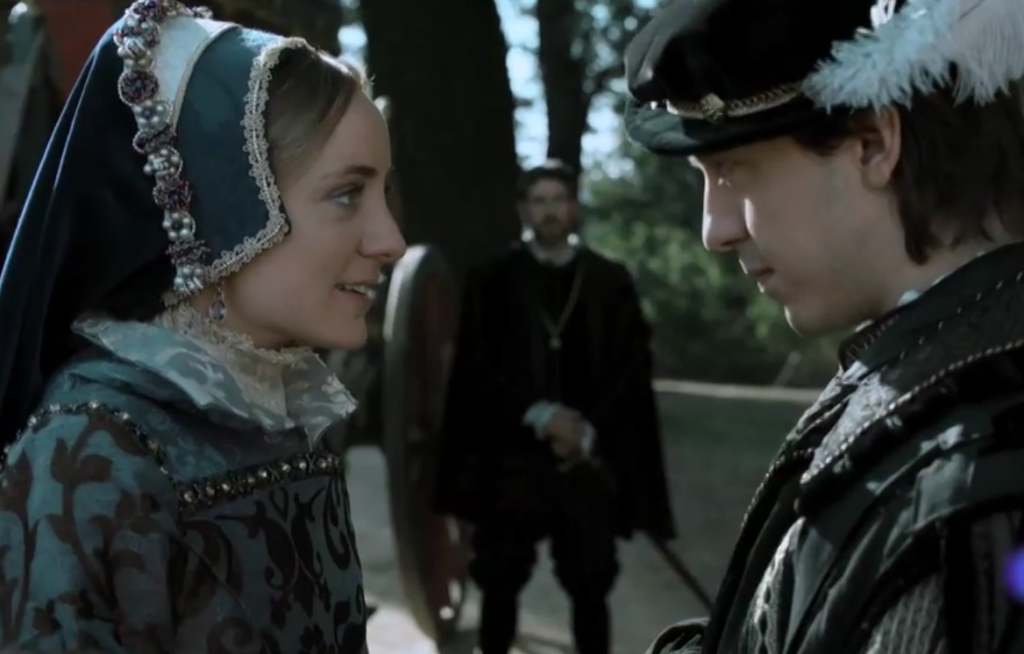
The matrimony of Queen Mary I of England and Philip II of Spain was not based on love. Although she had a husband, Mary was never happy in personal life. Who is responsible for her afflictions? King Henry VIII, her own father! It is his fault that his eldest daughter had not married years ago when he had not permitted anyone to wed her, most likely out of fear that Mary could have children who would become the rival claimants of the English throne, creating troubles for Henry’s son, Edward.
In fact, both Henry and Philip were responsible for Mary’s sad and lonely death. Perhaps a dying Mary remembered her father, holding him accountable for her misfortunes, as well as blaming Anne Boleyn for them without understanding that even if Henry had not met Anne, he would have repudiated Catherine of Aragon in any case for the sake of someone else because the aging Catherine could not provide him with a male heir. Ultimately, King Henry VIII’s obsession with sons destroyed the Tudor dynasty, and this ruthless, narcissistic, and mercurial monarch had no one to blame but himself for the fact that neither Elizabeth nor Mary had children, and his dynasty ended.
All images are in the public domain.
Text © 2020 Olivia Longueville

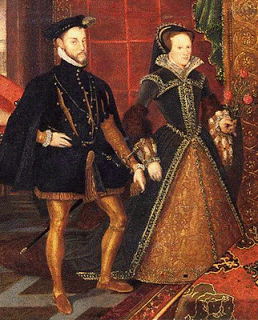




Hers is such a sad story. Yes she was a dreadful Queen. It’s her back story and how much she wanted to be a mother, like her own. Until her teens her hand was sought by all the heads of Europe that ended when Boleyn and her woes began
Mary Tudor was far from being an ideal queen, but I have a lot of sympathy to her despite all her mistakes. Thank you very much for reading!
1535 she was pregnant but married Philip in 1554?
Hello! Thank you for your comment, and I’m sorry for the belated response. I’ve been going through a highly stressful year of my life following my father’s death, and so many things, including my online activities, have literally stopped for me.
There must be a typo with the year of Mary’s false pregnancy. Of course she seems to have been pregnant in 1555-56. I will make necessary changes, and thank you for bringing them to my attention.
I am so impressed by this article and I love how you included real historical quotes! This gave me the best and genuine insight into Mary I and Phillip across all my research. Thank you so much. I look forward to reading more of your articles.
On a side note, I agree with you that much of Henry VIII influence or lack there of contributed to Mary’s imbalance and overall ignorance of politics, life and relationships.
Hello! Thank you for your comment, and I’m sorry for the belated response. I’ve been going through a highly stressful year of my life following my father’s death, and so many things, including my online activities, have literally stopped for me.
I’m very glad that you are impressed by this article. Thank you very much for all your kind words! Yes, I tend to include real historical quotes. I am glad you received some insight into Mary I and Phillip, and I hope it was interesting and beneficial information for you.
“On a side note, I agree with you that much of Henry VIII influence or lack there of contributed to Mary’s imbalance and overall ignorance of politics, life and relationships.”
I think Mary’s character, especially her negative features, were mostly shaped by the mistreatment of her and her mother, Catherine of Aragon, by Henry VIII.
I’m from Bermondsey South East London next to the Tower of London and am very proud of where I’m from and it’s history good and bad
Hello! Thank you for your comment, and I’m sorry for the belated response. I’ve been going through a highly stressful year of my life following my father’s death, and so many things, including my online activities, have literally stopped for me.
It is nice to have a visitor from Bermondsey South East London. I hope you are doing well. If I may ask, were you looking for some special article on this website?
Hey there Liv,
I was wandering the internet looking for sources of historical research when I stumbled upon this humble website. The way your writing flows mesmerised me and has captivated me into a trance. I hope you continue your work and I am teetering on the edge of my seat for your next piece of expertly written literature, however there is one request I have to ask of you.
Drop da digits fair maiden…
Dear Damien! Thank you very much for your message. I hope to be able to publish some new novels soon. I’ve been through many troubles as of late, and my father died a year ago, so I could not write at all.
Examining Queen Mary’s legacy, while she left a terrible memory of religious persecution, she may not previously have been given the credit and recognition she deserves. Her turbulent life was one of tragedy and triumph, insecurity and stubbornness and although her rule was ultimately ineffectual and unpopular there were occasions where she proved her herself to be a courageous leader.
I agree with you, Damien, that Mary Tudor’s turbulent life was one of tragedy and triumph. What happened to Catherine of Aragon and to Mary in her childhood and early adulthood traumatized Mary, and she became an embittered woman. Henry VIII is the main reason for all of Mary’s troubles, although Anne Boleyn is undoubtedly guilt as well.